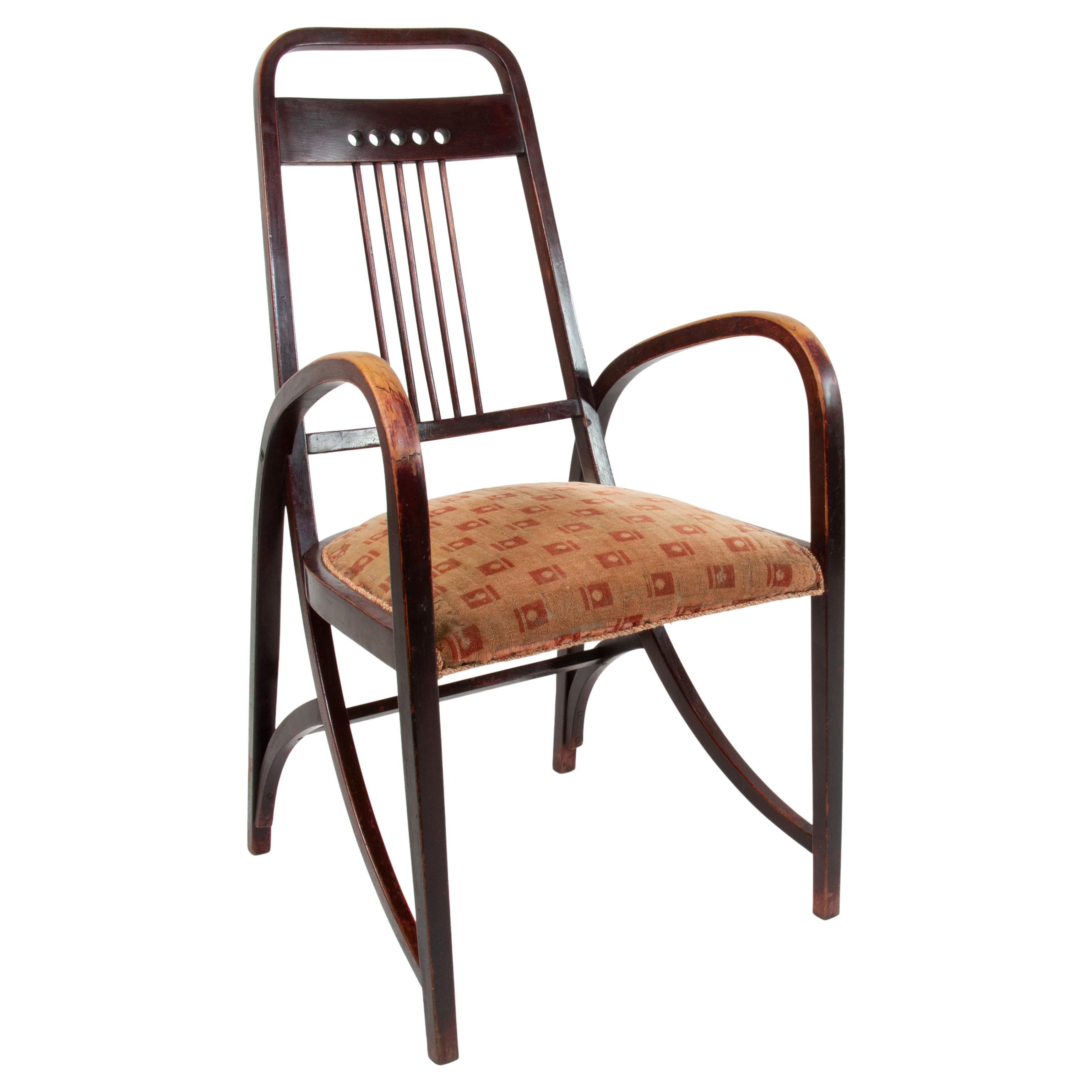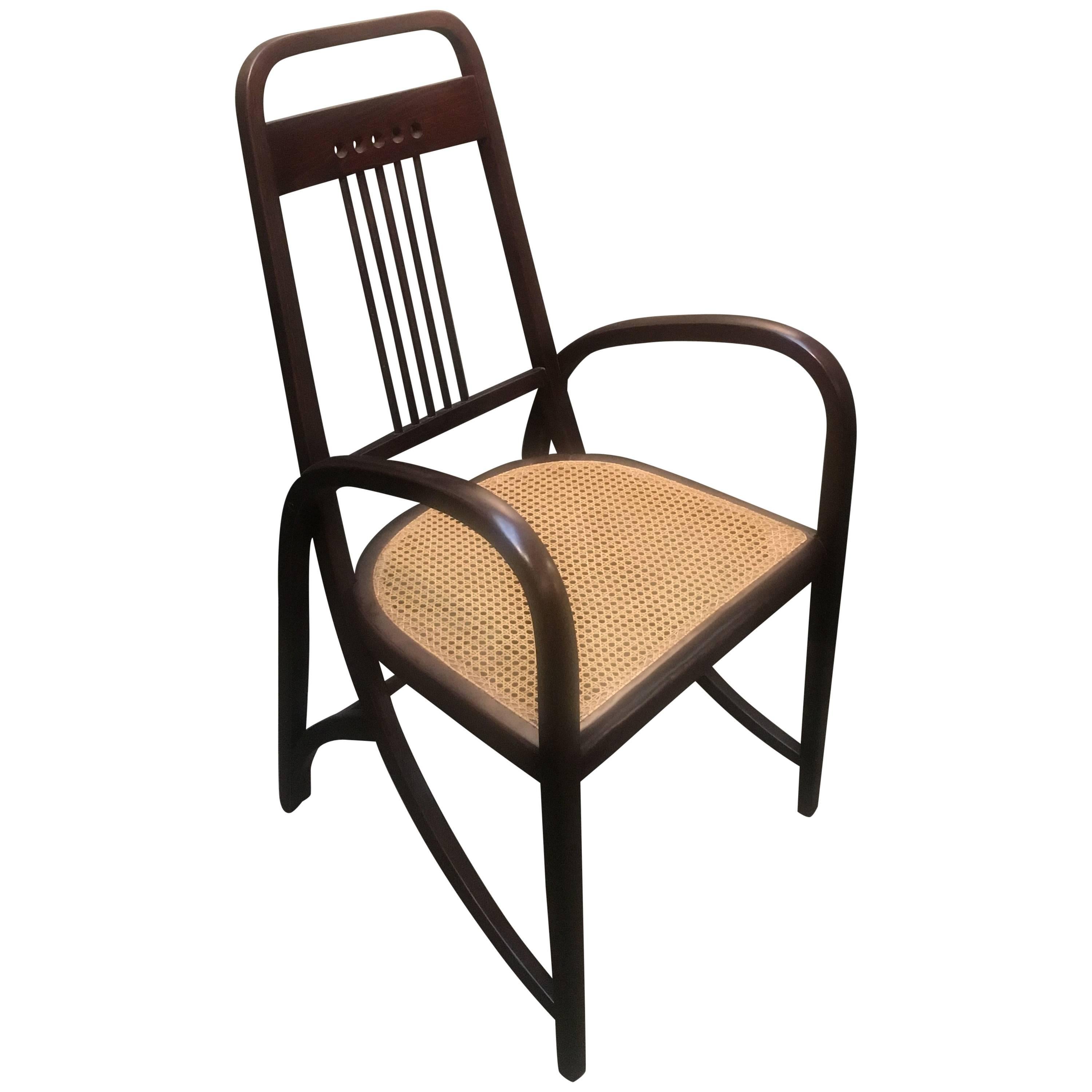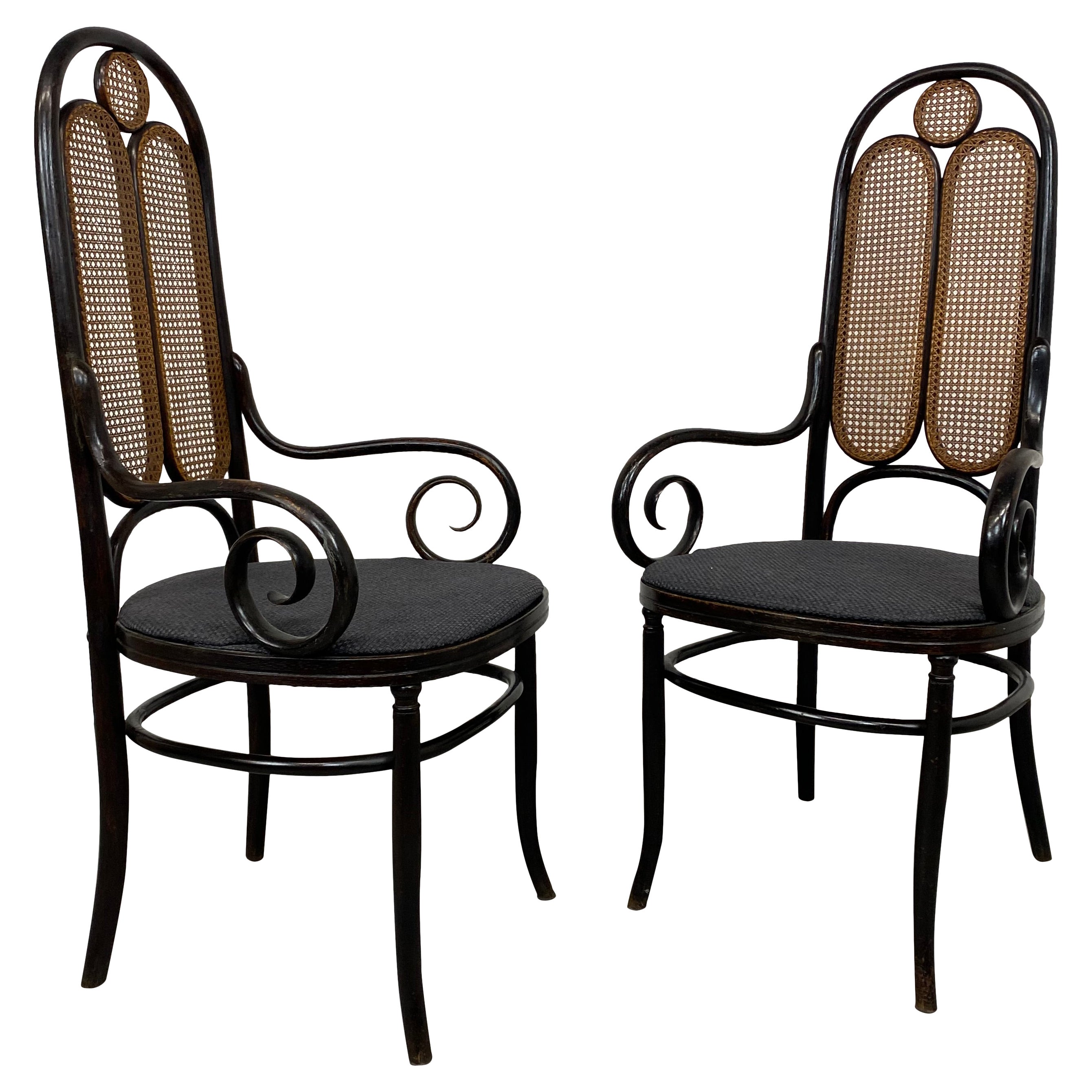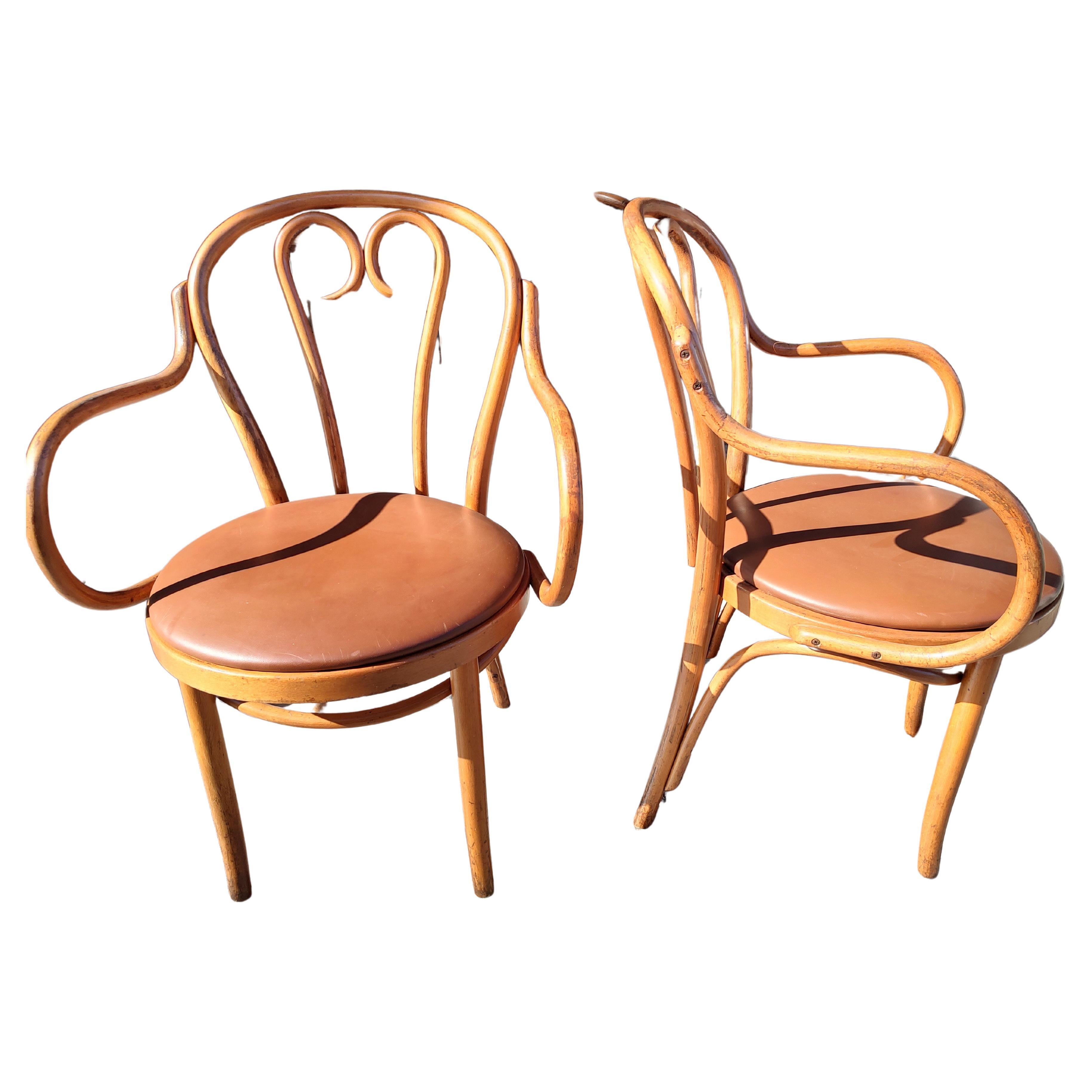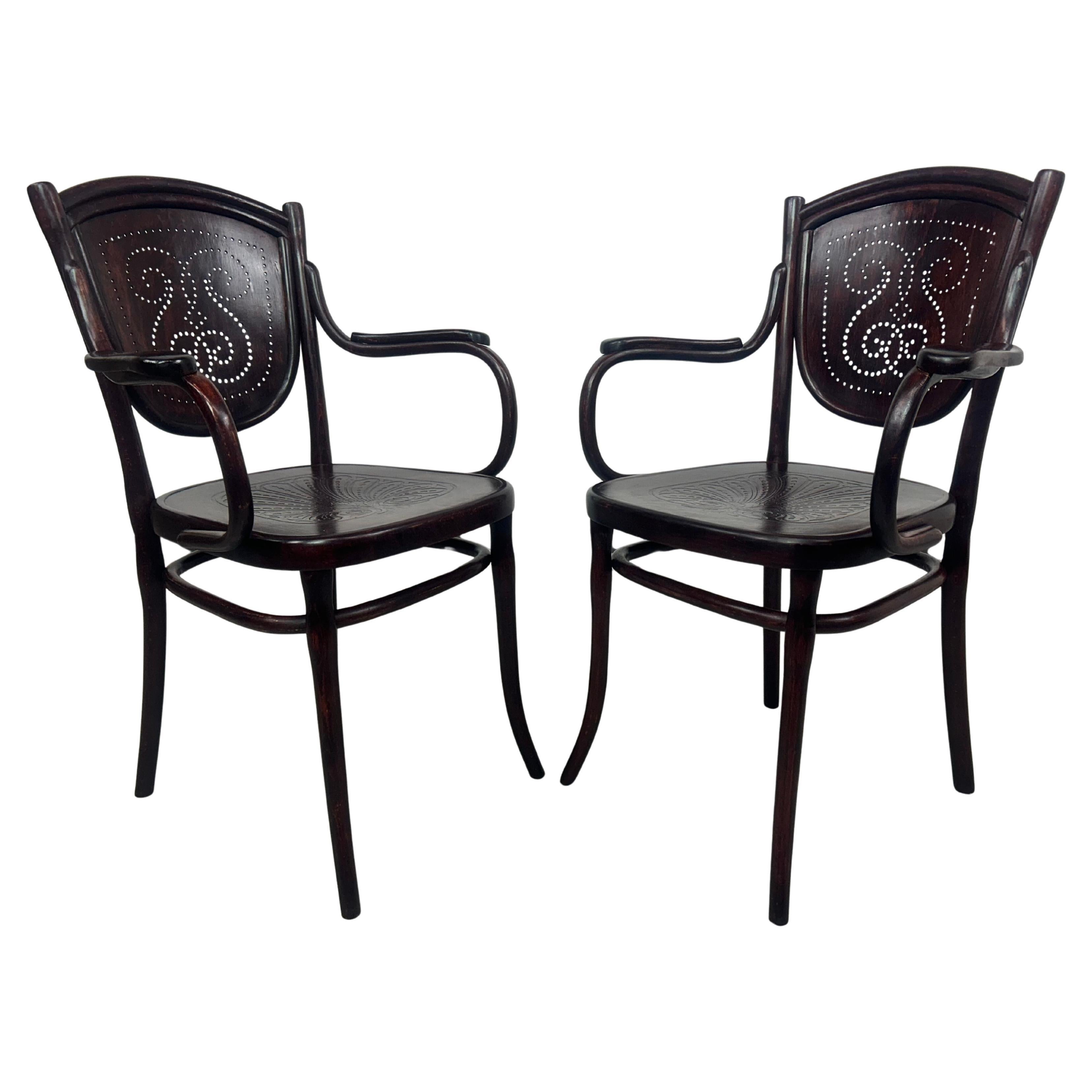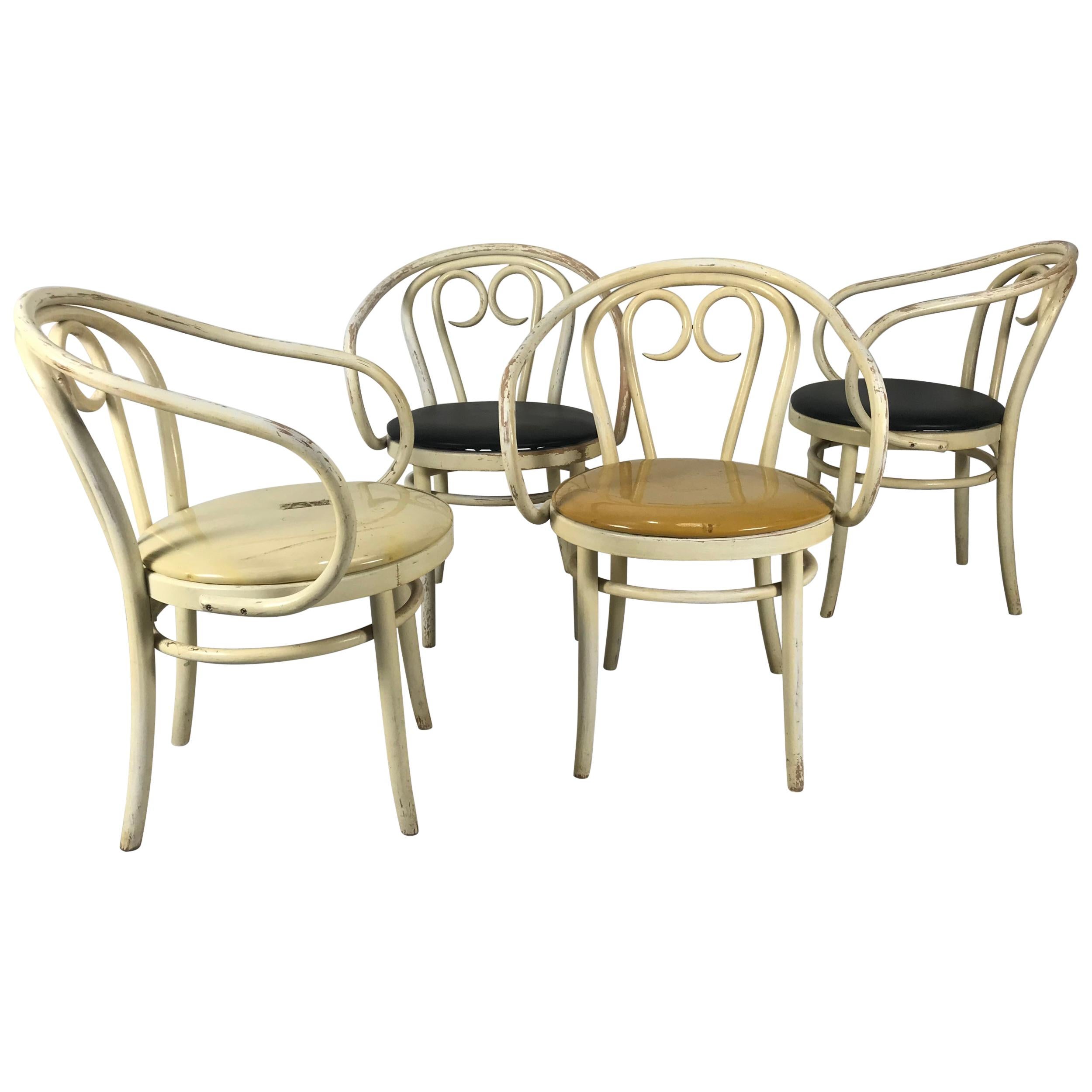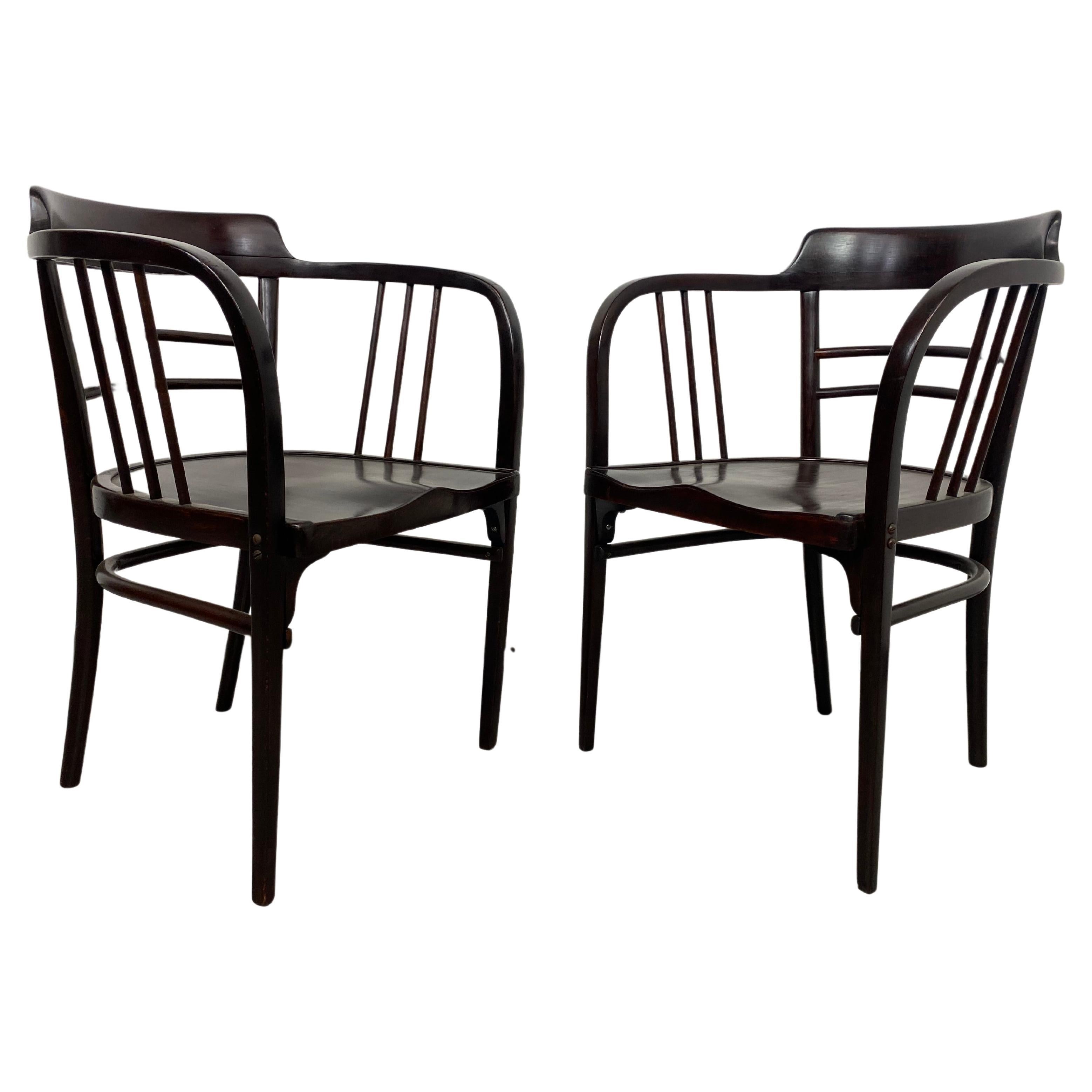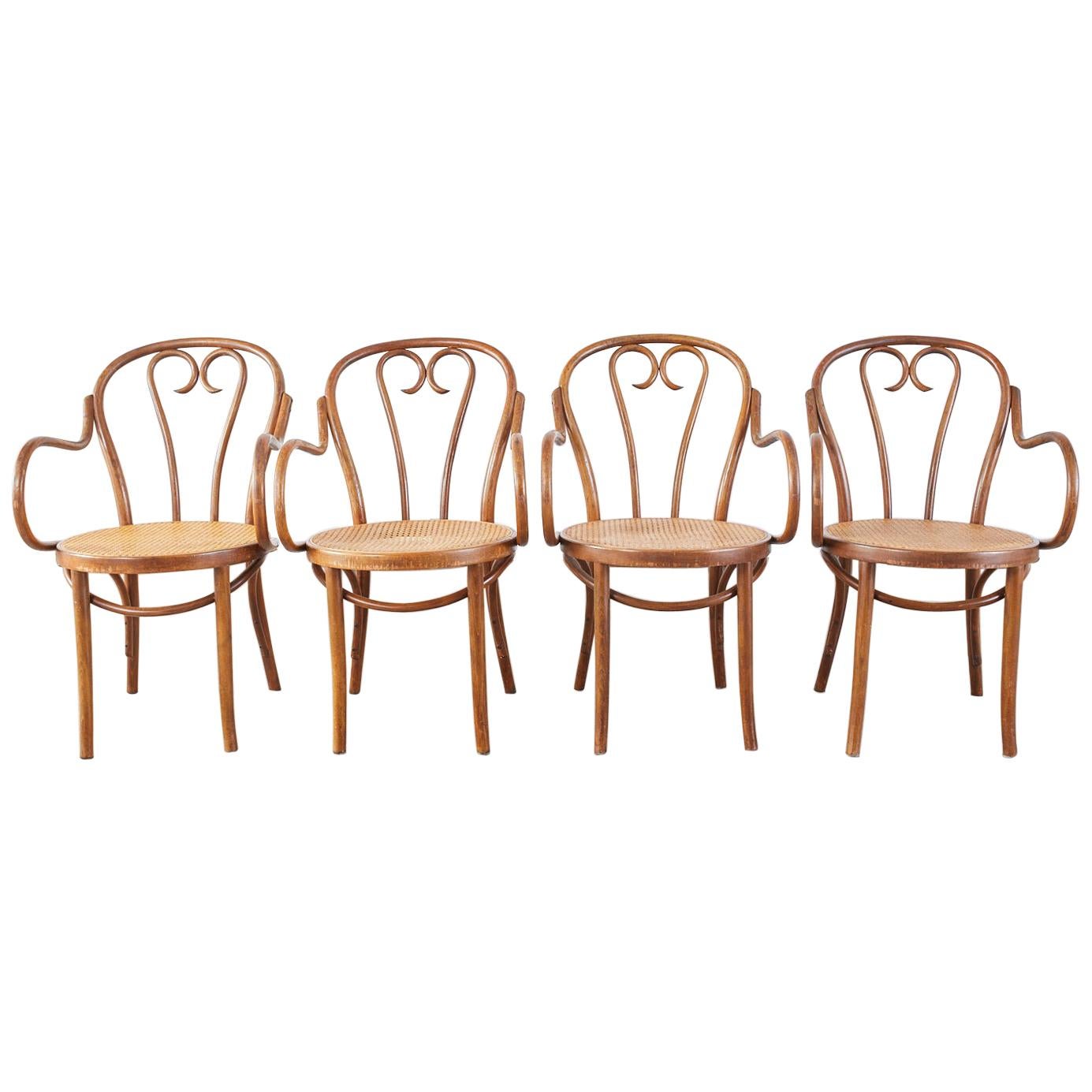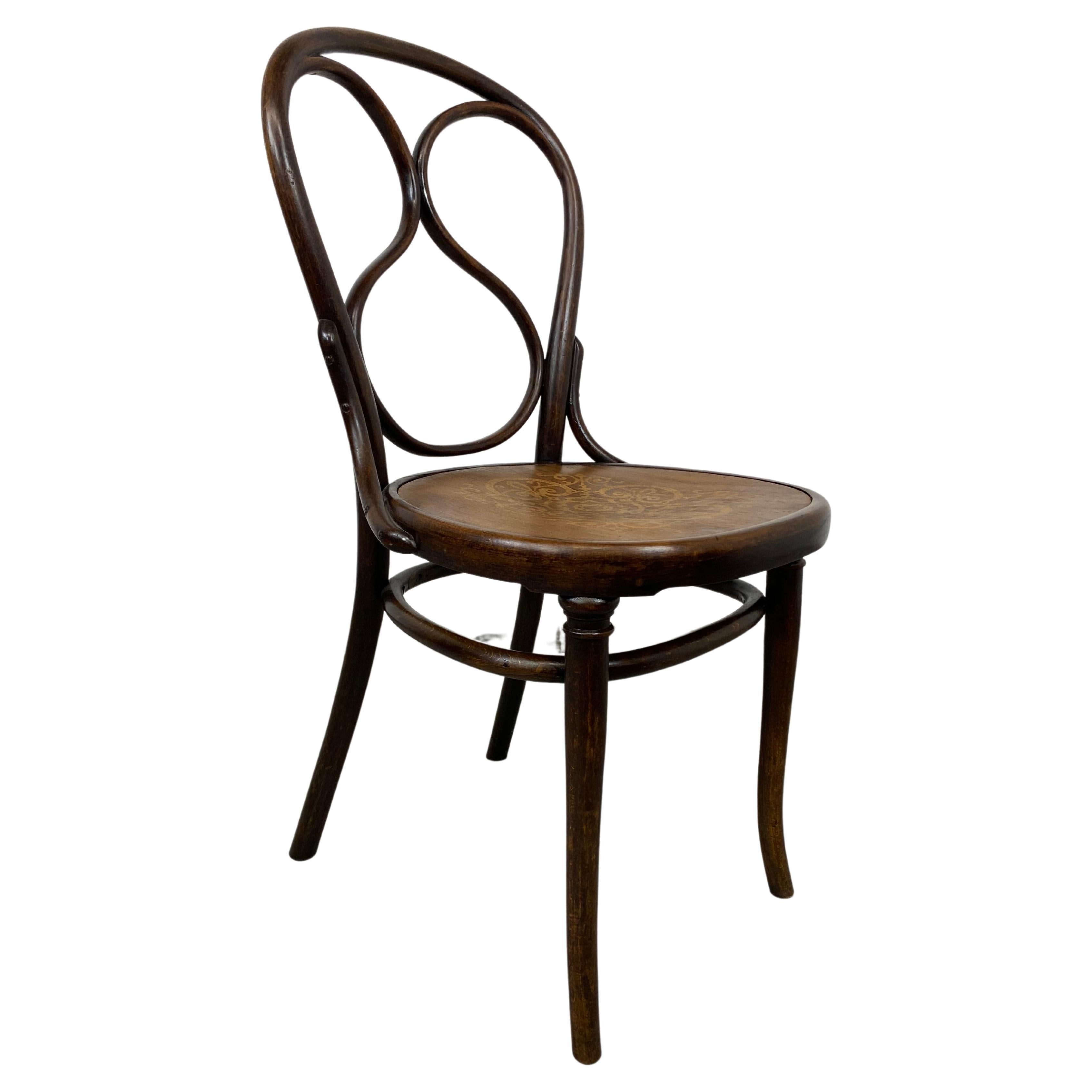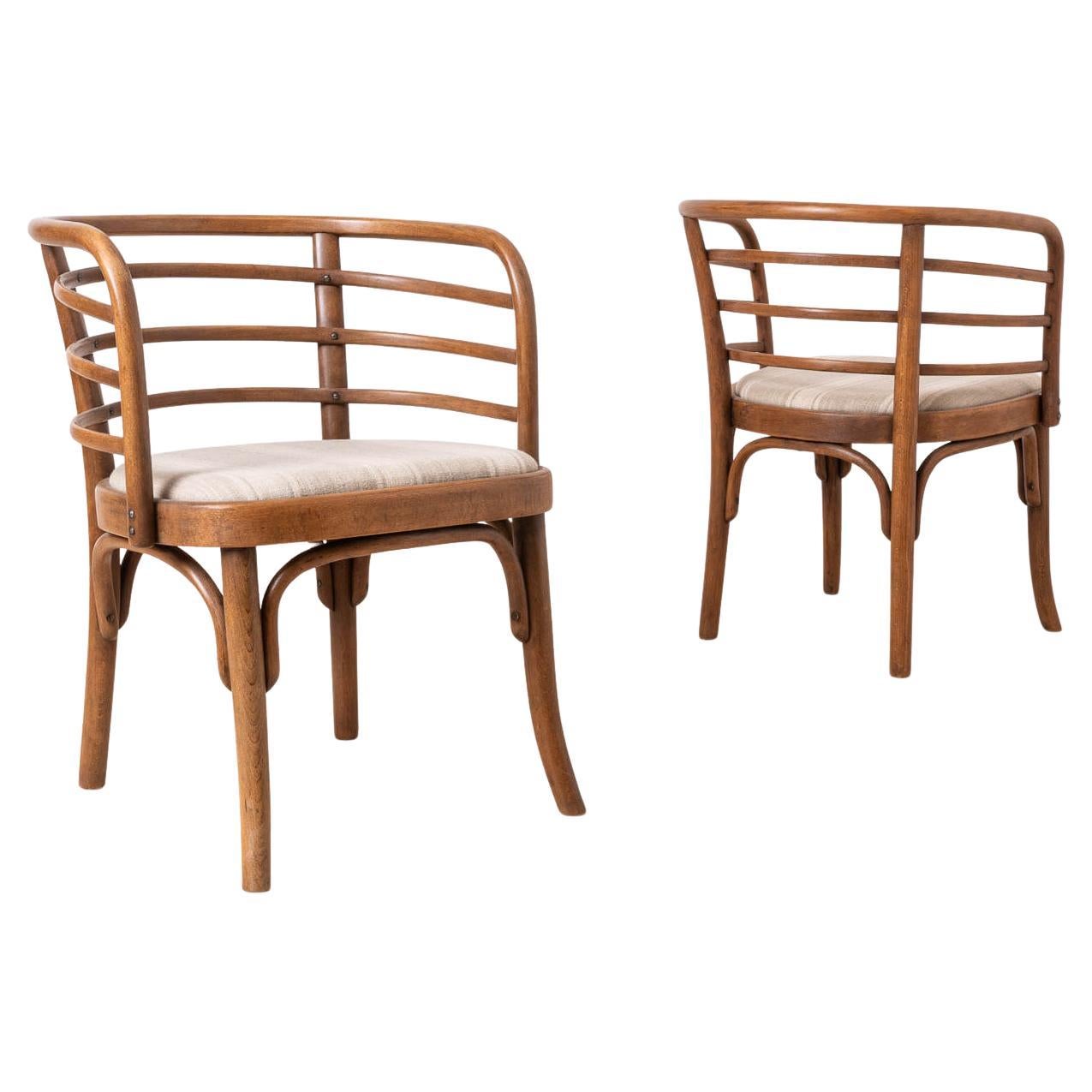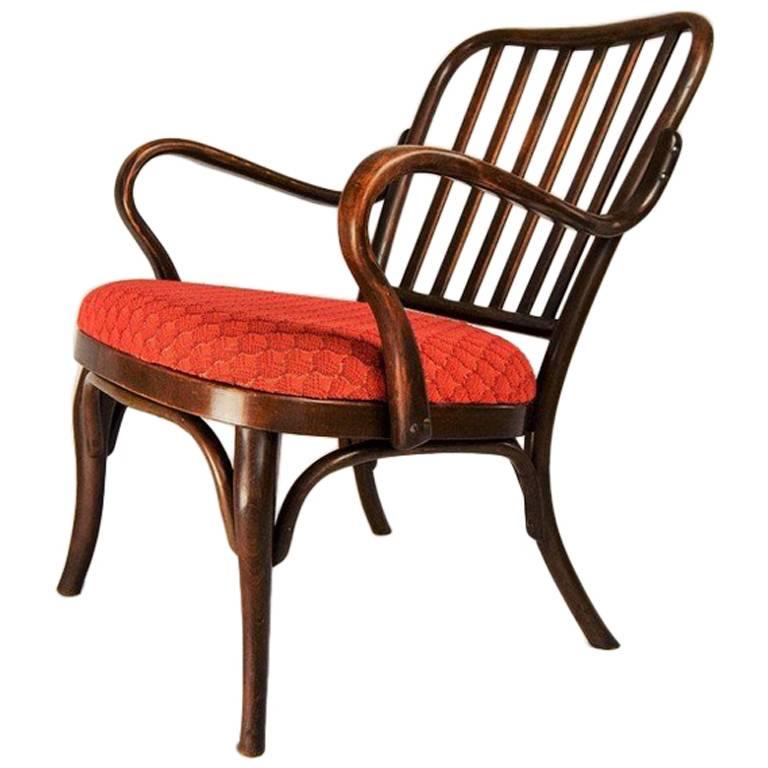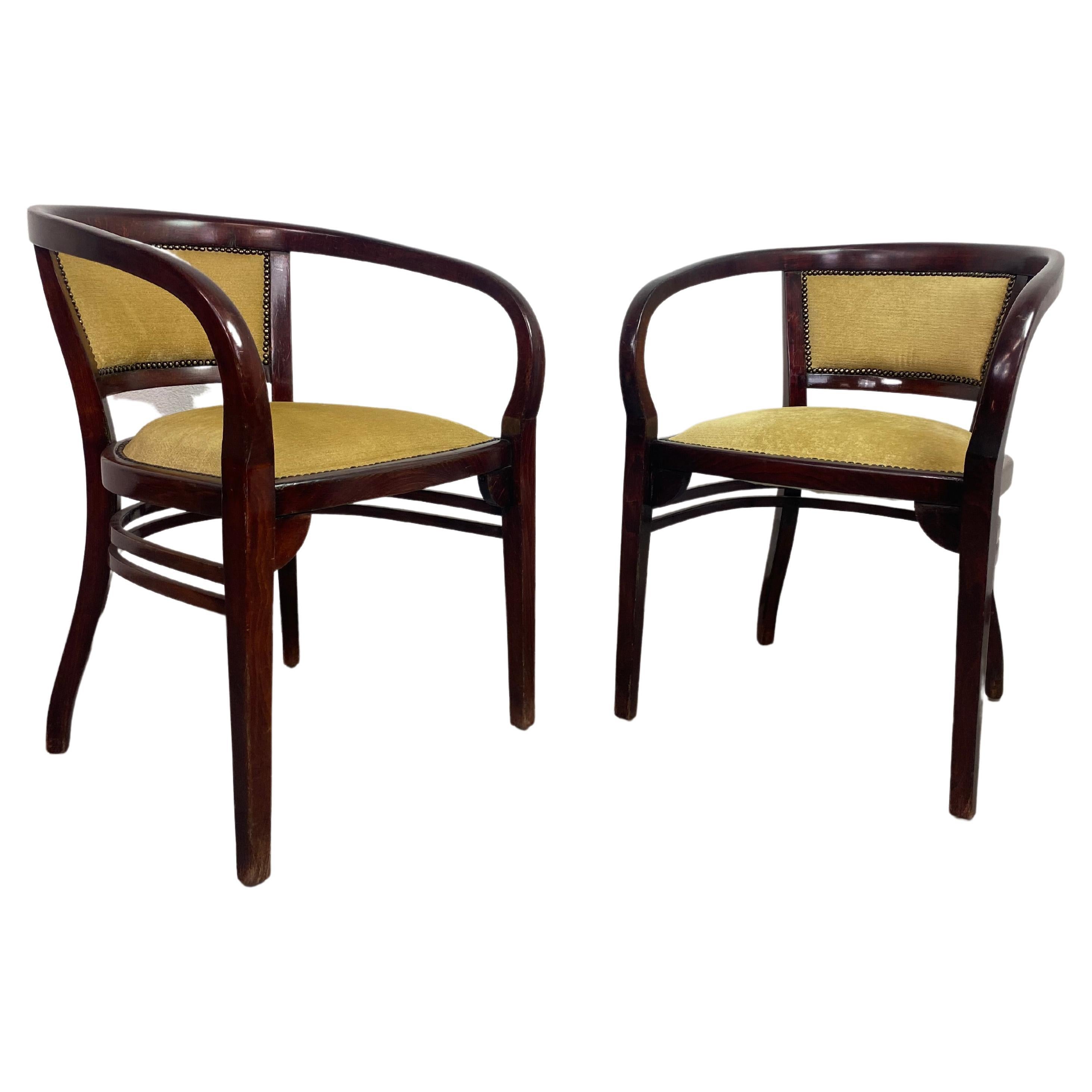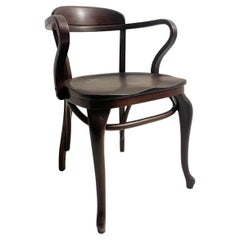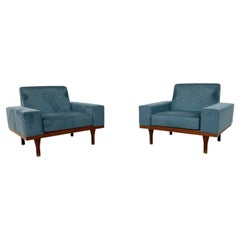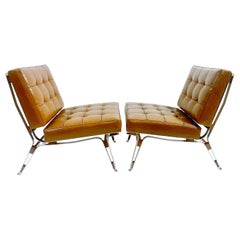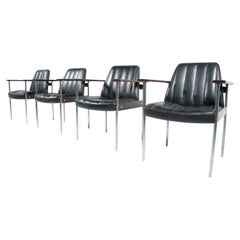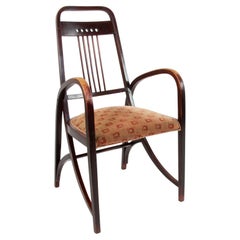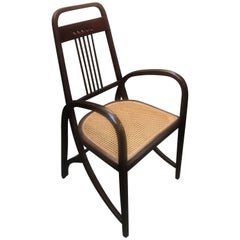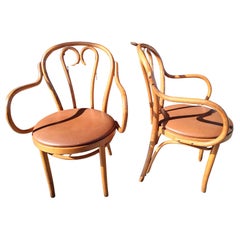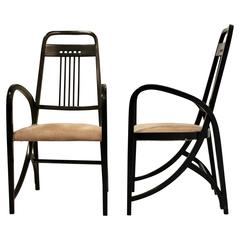
Pair of Thonet Armchairs, Model No. 511 by Wiener Werkstätte
View Similar Items
Pair of Thonet Armchairs, Model No. 511 by Wiener Werkstätte
About the Item
- Creator:Thonet (Manufacturer),Wiener Werkstätte (Designer)
- Dimensions:Height: 41.74 in (106 cm)Width: 21.07 in (53.5 cm)Depth: 23.23 in (59 cm)
- Sold As:Set of 2
- Style:Vienna Secession (Of the Period)
- Materials and Techniques:Beech,Ebonized
- Place of Origin:
- Period:1900-1909
- Date of Manufacture:1904
- Condition:Wear consistent with age and use. Minor fading.
- Seller Location:Brussels, BE
- Reference Number:1stDibs: LU226535715623
Wiener Werkstätte
Born from the Vienna Secession art movement in Austria during the early 20th century, the Wiener Werkstätte helped to cement Art Nouveau style and culture in Viennese art. Wiener Werkstätte furniture included armchairs, cabinets and table lamps, with production extending to other crafts such as ceramics, jewelry and fashion. The Werkstätte also boasted a large graphic arts department, which created nearly 1,000 unique postcards during the organization’s run.
Austrian architect Josef Hoffmann, painter Koloman Moser and industrialist Fritz Waerndorfer established the collective in opposition to the dominant trends in Viennese art. The artistic community was then largely directed by the Association of Austrian Artists, which had firm control over the creation and distribution of Austrian art. The collective’s style pushed back against traditional artistic preferences, instead favoring clear, bold lines and often-exaggerated, vibrant colors.
Employing over 100 people, including several master craftsmen, the Werkstätte formed relationships and alliances with a number of firms and stores, which sold and commissioned new work from the workshop.
As the Wiener Werkstätte’s mission aligned with emerging British sensibilities regarding art, many British artists worked closely with the collective. Some major Austrian artists collaborated with the collective, without officially joining, such as painter Gustav Klimt.
The Werkstätte’s artistic range was extensive and eclectic, with the organization producing a wide variety of furniture. In 1932, the global economic collapse forced it to shut down. With the outbreak of WWII soon to follow, the Wiener Werkstätte never reopened. Its legacy lived on, however, in the numerous artists and craftspeople who carried forward its commitment to progressive cultural and creative endeavors.
On 1stDibs, find antique Wiener Werkstätte lighting, seating and storage pieces.
Thonet
For more than 180 years, Thonet — or Gebrüder Thonet — has produced elegant and durable tables and cabinets as well as chairs, stools and other seating that wholly blur the lines between art and design. Widely known as a trailblazer in the use of bentwood in furniture, the European manufacturer has reimagined the places in which we gather.
Noted for his skill in parquetry, German-Austrian company founder Michael Thonet received an invitation from Austrian Chancellor Prince Metternich to contribute Neo-Rococo interiors to the Liechtenstein City Palace in Vienna. The Boppard-born Thonet had honed his carpentry skills in his father’s workshop, where he carried out experiments with plywood and modified the Biedermeier chairs that populated the studio.
Thonet’s work for the chancellor raised his profile, and the cabinetmaker gained international recognition, including at London’s Great Exhibition of 1851, which featured works created by members of the Arts and Crafts movement as well as industrial products of the day. Thonet showed a range of furniture at the fair and won the bronze medal for his bentwood chairs. He incorporated his family’s company, the Thonet Brothers, with his sons in 1853.
Bentwood furniture dates as far back as the Middle Ages, but it is the 19th-century cabinetmaker Thonet who is most often associated with this now-classic technique. Thonet in 1856 patented a method for bending solid wood through the use of steam, and from there, the bentwood look skyrocketed to furniture fame. The works of renowned mid-century modern designers such as Alvar Aalto, Arne Jacobsen, and Charles and Ray Eames that put this technological advancement to use would not be as extensive or celebrated were it not for the efforts of the pioneering Thonet.
Considered the world’s oldest mass-produced chair, Michael Thonet’s ubiquitous Chair No. 14 demonstrated that his patented bentwood technology made it possible to efficiently produce furniture on an industrial scale. Now known as the 214, it won the German Sustainability Award Design for 2021, a recognition of the company’s commitment to environmentally responsible production.
Often called the Coffee House chair — the company’s first substantial order was for a Viennese coffeehouse — the No. 14 remains an icon. Thonet originally designed the chair in 1859, and it is considered the starting point for modern furniture.
The bentwood process opened doors — there were investments in machinery and new industrial processes, and the business began mass-producing furniture. By the end of the 1850s, there were additional Thonet workshops in Eastern Europe and hundreds of employees. Michael Thonet’s reputation attracted the attention of notable architects including Otto Wagner, Marcel Breuer and Ludwig Mies van der Rohe.
The No. 14 was followed by the No. 18, or the Bistro chair, in 1867, and the 209, or the Architect’s chair, of which Le Corbusier was a fan. (The influential Swiss-French architect and designer used Thonet furniture in his Pavillon de l’Esprit Nouveau at the 1925 International Exposition of Decorative Arts in Paris.)
Thonet’s chair designs also appeared in artwork by Toulouse-Lautrec, John Sloan and Henri Matisse in his Interior with a Violin Case. The noteworthy Thonet rocking chair remains a marvel of construction — in the middle of the 19th century, Michael produced a series of rockers in which the different curved parts were integrated into fluid, sinuous wholes. Thanks to Thonet, the humble rocker acquired something unexpected: style. It was captured in the paintings of Pablo Picasso, Pierre-Auguste Renoir and James Tissot.
Thonet is currently split into global divisions. Thonet Industries U.S.A. was acquired in 1987 by Shelby Williams and joined the CF Group in 1999, while the Thonet brand in Germany is owned by Thonet GmbH.
Find a collection of antique Thonet furniture on 1stDibs.
More From This Seller
View AllAntique Early 1900s Vienna Secession Armchairs
Beech
Vintage 1950s Danish Armchairs
Fabric, Wood
Vintage 1950s Italian Mid-Century Modern Armchairs
Chrome
Vintage 1960s Norwegian Mid-Century Modern Armchairs
Metal
Vintage 1960s Danish Armchairs
Wood
Early 20th Century Austrian Art Nouveau Armchairs
Bentwood
You May Also Like
Antique Early 1900s Austrian Vienna Secession Armchairs
Fabric, Linen, Upholstery, Cord, Bentwood, Lacquer, Trimming
Antique Early 1900s Austrian Vienna Secession Armchairs
Cane, Beech, Bentwood
Vintage 1910s Austrian Vienna Secession Armchairs
Fabric, Rattan, Bentwood
Vintage 1960s American Modern Dining Room Chairs
Beech
Antique Early 1900s Austrian Vienna Secession Armchairs
Beech, Bentwood
Vintage 1960s American Bauhaus Armchairs
Bentwood, Patent Leather
